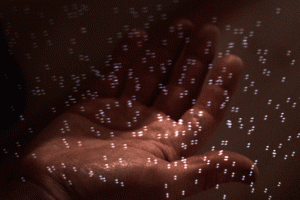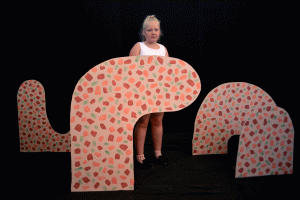WHAT IS SYMBIOSIS?
Symbiosis is a Greek word meaning “living together” and in biology describes an intimate association between two different species. This can often mean organisms of one species living inside a different species. Examples in nature include lichens and corals, each of which is in fact made up of two and sometimes more different species living together in symbiosis.
Video of Paramecium and Algue from Pr. Michael Brokhust and Ewan Minter’s lab: https://vimeo.com/208111917
WHY IS SYMBIOSIS IMPORTANT?
Living together in symbiosis can allow organisms to survive in habitats that would otherwise be inhospitable. For example some fungi allow plants to scavenge vital nutrients from far beyond the reach of their own roots.
Symbiosis also played a crucial role in the evolution of complex life: animal and plant cells are powered by mitochondria which extract energy from food, and plant cells can harvest energy from the sun to convert carbon dioxide and water into sugars by photosynthesis thanks to their chloroplasts. Mitochondria and chloroplasts are descendants of ancient symbioses with bacteria that began billions of years ago. So the food that we eat is full of energy thanks to symbiosis (chloroplasts), and symbiosis allows us to extract this energy (thanks to our mitochondria).
SYMBIOSIS AND HEALTH
Our bodies are home to trillions of microbes that vastly outnumber our own cells and weigh more than 2kg! Collectively our microbial passengers are known as the human microbiome. Our microbiome plays a vital role in keeping us healthy: it helps us to digest food, to fight off infection, and may even contribute to the healthy development of our organs, brains and immune systems. YOU are a walking, talking symbiosis!
Laurence Payot’s recent work has been inspired by discussions and collaborations with scientists at the University of York.
Here is a more information about the science.
SYMBIOSIS RESEARCH AT UNIVERSITY OF YORK
We want to understand how symbioses originate and evolve. Together with colleagues at University of Sheffield we are asking the question: “What conditions led to the evolution of the chloroplast?”.
To do this we will observe, as it happens, the evolution of a newly created symbiosis between a single-celled animal (Paramecium) and photosynthetic cyanobacteria living inside them. The cyanobacteria provide the Paramecium with sugars made by photosynthesis while the Paramecium provides the algae with nutrients. Billions of years ago a similar event led to the evolution of the chloroplast: By recreating this in the lab we can determine for the first time how and why chloroplasts first evolved, a hugely important event in the history of life on Earth. It will also teach us about how and why symbioses in general evolve to become stable or sometimes breakdown. Understanding this is important because global climate change appears to be driving the breakdown of many important symbioses, such as corals.





